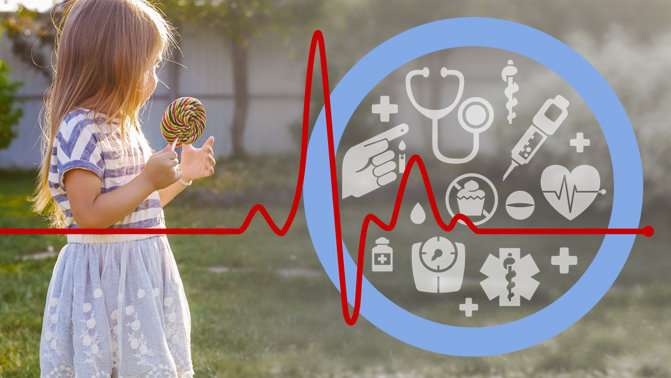Young diabetics could have seven times higher risk for sudden cardiac death

Young diabetics could have seven times more risk of dying from sudden cardiac arrest than their peers who don't have diabetes, according to new research.
The study points to the importance of early and ongoing heart monitoring in children and young adults with both Type 1 and Type 2 diabetes, said Jesper Svane, a graduate research student in cardiology at Copenhagen University Hospital in Denmark.
Svane recently presented the preliminary study findings at the American Heart Association's Scientific Sessions, a gathering of scientists and doctors from around the world exchanging ideas about the latest research and advances in heart and brain health.
"I think parents are probably already aware of their children's symptoms and pains, so this message is more for doctors, about more cardiac monitoring," Svane said. Children and young adults who have had a sudden cardiac death often have had symptoms of chest pains or fainting beforehand, he said.
"When you have a young person with diabetes you should be aware that this person has a higher risk of heart disease even though they are young, even with Type 1 diabetes."
Diabetes is a disease caused when blood sugar, also called blood glucose, is too high. Glucose from food is the body's main source of energy and is regulated by insulin, a hormone made by the pancreas. Over time, diabetes can cause a host of health problems, including damage to blood vessels and nerves, such as those that control the heart and blood vessels.
Type 1 occurs most often in children and young adults and is caused by the immune system attacking insulin-producing cells in the pancreas. Type 2, diagnosed at any age but usually in adults, occurs when there isn't enough insulin or when the body doesn't use it well. A sedentary lifestyle, obesity and high blood pressure can increase the risk of this type of diabetes.
Studies have shown people with diabetes have a higher risk of premature death, but Svane and fellow researchers said there has been little research on the rates and causes of death among young diabetics.
Their large national study drew from Denmark's detailed health, pharmacy and death registries. It included information about all Danish citizens ages 1 to 35 years old from 2000 to 2009 – as well as adults 36 to 49 years old from 2007 to 2009.
Researchers said 5 percent of the 14,294 people who died during that decade had diabetes, with 70 percent having Type 1 and 30 percent having Type 2.
The study found people with diabetes had eight times more risk of dying from all types of heart disease. Sudden cardiac death was the cause in 17 percent of people with diabetes, and researchers calculated it was seven times more common than in those without diabetes.
Sudden cardiac death is triggered by an electrical malfunction in the heart that causes it to beat irregularly. It can happen abruptly and without warning. Once the heart's pumping action is disrupted and blood can't reach the brain, lungs or other organs, the person loses consciousness and has no pulse. Death can happen in minutes without treatment.
Each year, more than 350,000 Americans have a cardiac arrest outside a hospital. Only about one in 10 survives.
Those statistics are why the AHA and other health and community groups around the country have been pushing for more CPR training in schools. Less than half of the out-of-hospital cardiac arrests receive bystander CPR before medical help arrives – and the survival odds are higher for people who do.
Currently, 37 states and Washington, D.C., have passed laws or adopted curriculum changes to require Hands-Only CPR training to graduate high school, according to AHA statistics.
Robert Campbell, M.D., pediatric cardiologist at the Children's Healthcare of Atlanta Sibley Heart Center in Georgia, said training in schools is about preparing "anybody and everybody" to be ready to jump in quickly with CPR.
Campbell is medical director of Project SAVE, a program the children's hospital started in 2004 to help prevent sudden cardiac arrest deaths. So far, about 1,200 Georgia schools have gone through SAVE's training, which includes creating emergency action plans, CPR education and drills. The program also trains people to use an automated external defibrillator, or AED, a portable device that checks and restores a heart to its normal rhythm.
"It's a basic life skill," Campbell said. "It's not rocket science, but it's also something you can't Google in the middle of a cardiac arrest."
More information: Young Persons With Diabetes Have a 7-Fold Increased Risk of Sudden Cardiac Death Compared to Persons Without Diabetes: A Nationwide Cohort Study in Denmark. Circulation. circ.ahajournals.org/content/136/Suppl_1/A20507















